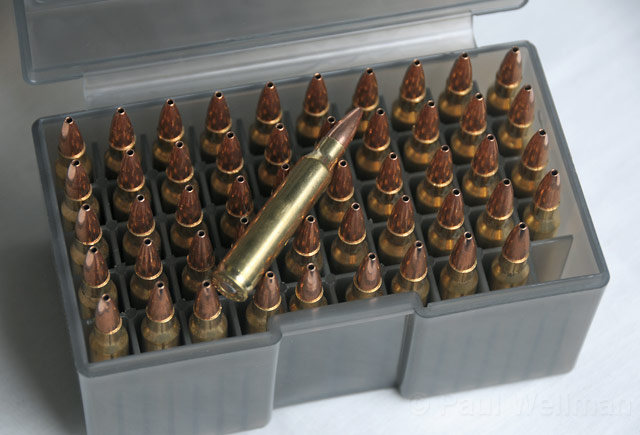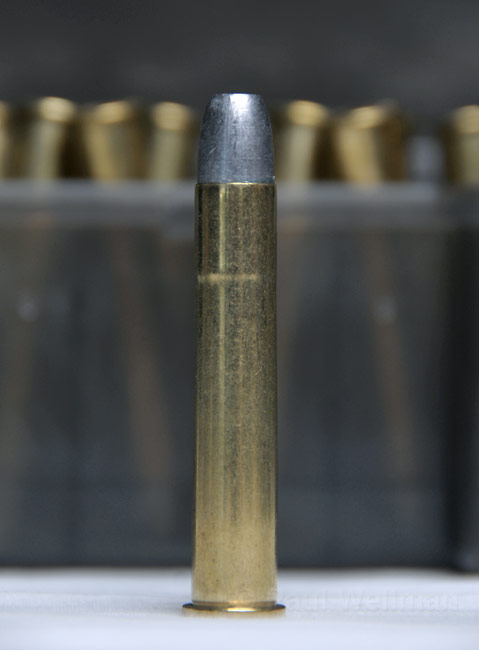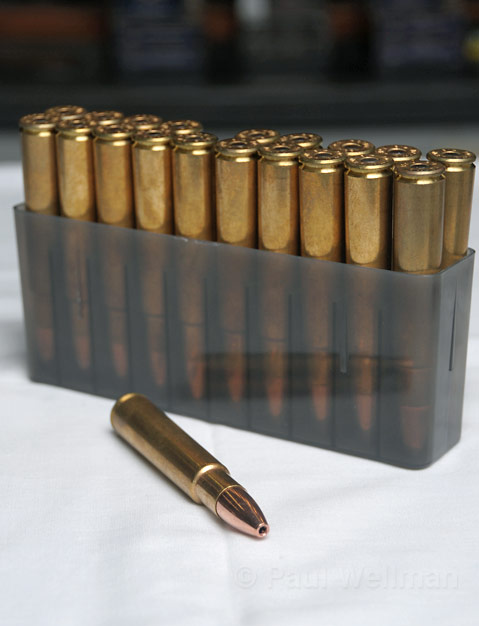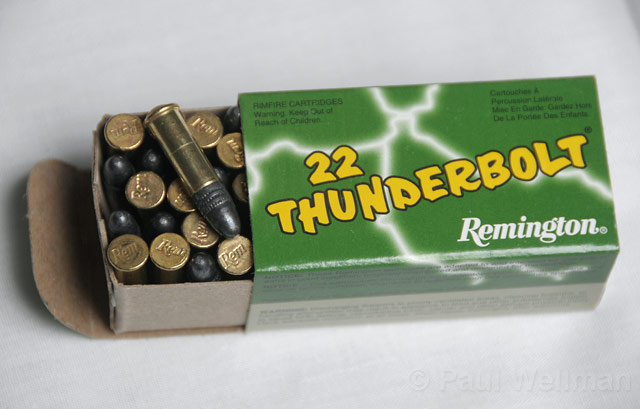EPA Won’t Bite the Bullet?
Denies Petition to Ban Lead Hunting Ammo; Environmentalist Groups Mull Next Move

Purportedly swayed by a “misleading legal opinion” sent by the National Rifle Association, the EPA recently shot down a petition to ban lead-based hunting bullets nationwide. A coalition of environmentalist groups filed the petition in August, arguing that 3,000 tons of lead ammo scattered yearly by hunters throughout the country’s prairies, mountains, and lakes sickens and kills millions of animals.
The Environmental Protection Agency‘s denial, said its representatives, was based on the understanding that the organization doesn’t have the legal authority to regulate bullet sales. Conservation advocates, though, argue that the EPA does in fact have that power, and that back room politics and lobbying rather than factual data helped inform the agency’s decision.

“The EPA erred, either purposely or by not reading the applicable laws we cited in our extensive, well-researched petition, in their rush to dismiss the hunting ammunition portion of our complaint before the November elections,” said Darin Schroeder, speaking on behalf of the American Bird Conservancy (ABC) which, in conjunction with the Center for Biological Diversity (CBD), led the regulatory effort. The EPA is still considering a part of the petition that seeks to ban lead in fishing gear.
Currently at issue is a specific section within the federal Toxic Substances Control Act of 1968, said the CBD’s Jeff Miller. In its denial, the EPA claimed lead bullets aren’t covered by the Toxic Substances Act because the regulation exempts “any article the sale of which is subject to the tax imposed by section 4181 of the Internal Revenue Code.” But section 4181, said Miller, taxes firearms, shells, and cartridges, not bullets. Miller also stated that Senate and House reports on the legislative history and intent of the act run counter to the EPA’s claim.
The CBD, said Miller, has sent a Freedom of Information Act request to the EPA asking for all documents relating to the agency’s decision. While not able to elaborate on a rumored lawsuit, Miller did say last week that “all options are on the table at this point.” EPA representatives could not be reached for comment.
The use of lead ammo is no longer legal in specific swaths of America — throughout the California condor’s habitat range, for instance — but it’s still allowed in much of the country. Environmentalists argue that millions of animals have been poisoned, and continue to be poisoned, when they scavenge carcasses shot and contaminated with lead bullet fragments or, mistaking them for food, eat the pellets themselves.

Moreover, say anti-lead advocates, the toxic metal can harm people, especially children, when they eat hunted meats as bullets commonly fragment into dozens of small shards that are rarely entirely extracted. “The paint industry got the lead out of paint, the auto industry got the lead out of tire weights, the toy industry got it out of children’s toys, the petroleum industry got it out of gasoline, and the home building industry got it out of pipes,” said Miller. “We also need to get lead out of ammunition and fishing gear.”
As an alternative to the poisonous element, “get the lead out” groups want to see more of the United States’ 25 million hunters use bullets made from different alloys like copper, bismuth, tungsten, steel, or tin.
The CBD successfully sued California back in 2007 in order to protect the condor’s massive flying range from lead shot, and promised back then to not stop until regulation is imposed nationwide. “The last major existence of lead in our environment is hunting and shooting,” Miller was quoted as saying in a 2007 Time magazine article. “After securing the protection of condors in California, we’re definitely going to be looking at regulation nationwide.”
But detractors argue lead-free bullets are more expensive, harder to find, and inhumane. Because lead is so heavy, it’s capable of great stopping power, they say, and it kills a targeted animal quickly and cleanly, unlike copper or other popular alternatives that can be less stable and less accurate.
However, Becky Davis of Goleta-based Custom Cartridge said technology has gotten to the point where large-caliber copper bullets are comparable to lead in stopping animals dead in their tracks.
Where lead ammo pushes and “swages” its way through flesh and organs, copper bullets — especially the hollow-point variety — open up into a propeller shape when they encounter resistance, cutting their way through; both methods work equally well in the context of “Killing Theory,” explained Davis. Custom Cartridge, said Davis, makes more than 350 different calibers of copper bullets, but her customers usually buy the most popular dozen or so.

Alternative ammo for smaller-bore guns is a different story though, continued Davis. Popular .22 Long Rifles, often used by farmers to kill ground squirrels and other pesky varmints, don’t yet have a copper bullet version that makes the grade. Different companies, she said, are working an on alternative, but without much success thus far.
Anthony Prieto — an avid Santa Barbara hunter and equally fervent environmentalist who heads the lead-free hunting group Project Gutpile — said he doesn’t understand how people against regulation can argue the ban would be a slippery slope toward impinging on Second Amendment rights.
It’s about the health of people and wildlife, he said, and keeping the environment toxin-free so hunters can practice their craft without worrying about ingesting the metal or spreading it around for other animals to accidentally eat. The motivation for getting lead out of children’s toys is the exact same rationale used in trying to ban lead ammo, he summed up.
Prieto — conceding that it can be tough sometimes to track down lead-free shot — said that gun shops would have no choice but to start carrying alternatives if a ban was passed. Where things stand now, it’ll take at least a decade before the trend catches on, he worried. Prices would go down, too, as different brands hit the shelves and, like any other new product, began competing in the free market. But, even now, finding vendors online is a cinch, said Prieto, and the price difference between lead and non-lead ammo is negligible.
Intimately familiar with the issue and sensitive to both sides’ opinions, Prieto is in the middle of making a documentary that he claimed will show just how dangerous and unhealthy it is to have toxic projectiles flying around the country.



